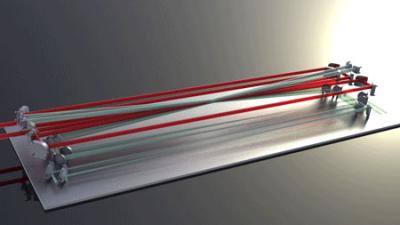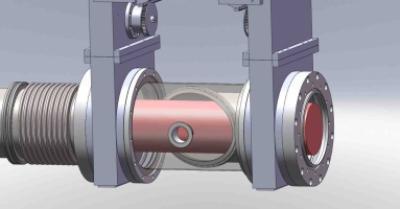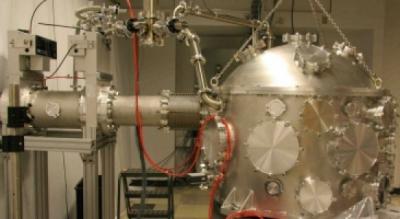The Scarlet laser is an ultra-intense, short pulse, laser system at The Ohio State University’s High Energy Density Physics group. Scarlet is a 400 Terawatt (TW) laser with an output of 15 Joules (J), in 40 femtoseconds (fs) at a rate of one shot per minute.
Scarlet Laser specifications:
400 TW System:
- 1021 W/cm2 intensity
- 400 TW peak power
- 800 nanometer wavelength
- 15 Joule per pulse
- 40 femtosecond pulse width
- 5 micron FWHM focal spot size
- 1 shot/minute repetition rate
- Greater than 1010:1 pulse contrast ratio
Laser Diagnostic devices:
- On-shot energy
- SPIDER Single Shot Pulse Width
- On-shot intensity spectrum
- Third-order Cross-Correlator for Pulse Contrast
- On-shot focal spot diagnostic
- Water-cell nanosecond pulse contrast
- Spatial mode cameras
- Spatial chirp diagnostic
Experimental Diagnostic devices:
- Electron/positron magnet based spectrometers
- Thomson parabola ion spectrometer
- Bremsstrahlung x-ray spectrometer (HXBS
- 68 eV XUV imager
- 256 eV XUV imager
- 394 eV XUV imager developed in collaboration with BNL
- Front and rear side HOPG x-ray spectrometer with flat crystals
- Curved HAPG spectrometer and imager
- Cu K-alpha imager based on spherically bent Bragg crystal
- Zr K-alpha imager based on spherically bent Bragg crystal
- Si He-alpha imager based on spherically bent Bragg crystal
- Radiochromic film pack (RCF)
- Single hit CCD spectrometer
- Cherenkov spectrometer
- Scintillator array
- Neutron detector (scintillator based)
- Image plate reader

Bringing the laser to the 400 TW level required the addition of a final 3-pass ti:sapp amplifier. This final amplifier is pumped with 50 J of green lasers. Now, the laser will propagate in vacuum to a compressor, which utilizes a pair of diffraction gratings measuring 36 cm and 56 cm in length. After compression, the laser continues, in vacuum, through a pellicle chamber, towards the target chamber. The pellicle chamber serves to isolate the compressor chamber from the target chamber by holding a 4 micron thick pellicle at Brewster angle. Once the beam enters the target chamber it is focused to a 5 micron focal spot which impinges on an engineered and expertly aligned target.



This 15 J, 40 fs pulse laser will fire at full power once per minute and reach intensities at focus of 1021 W/cm2. The resulting laser delivers more power in one shot than the world’s total annual power consumption.
